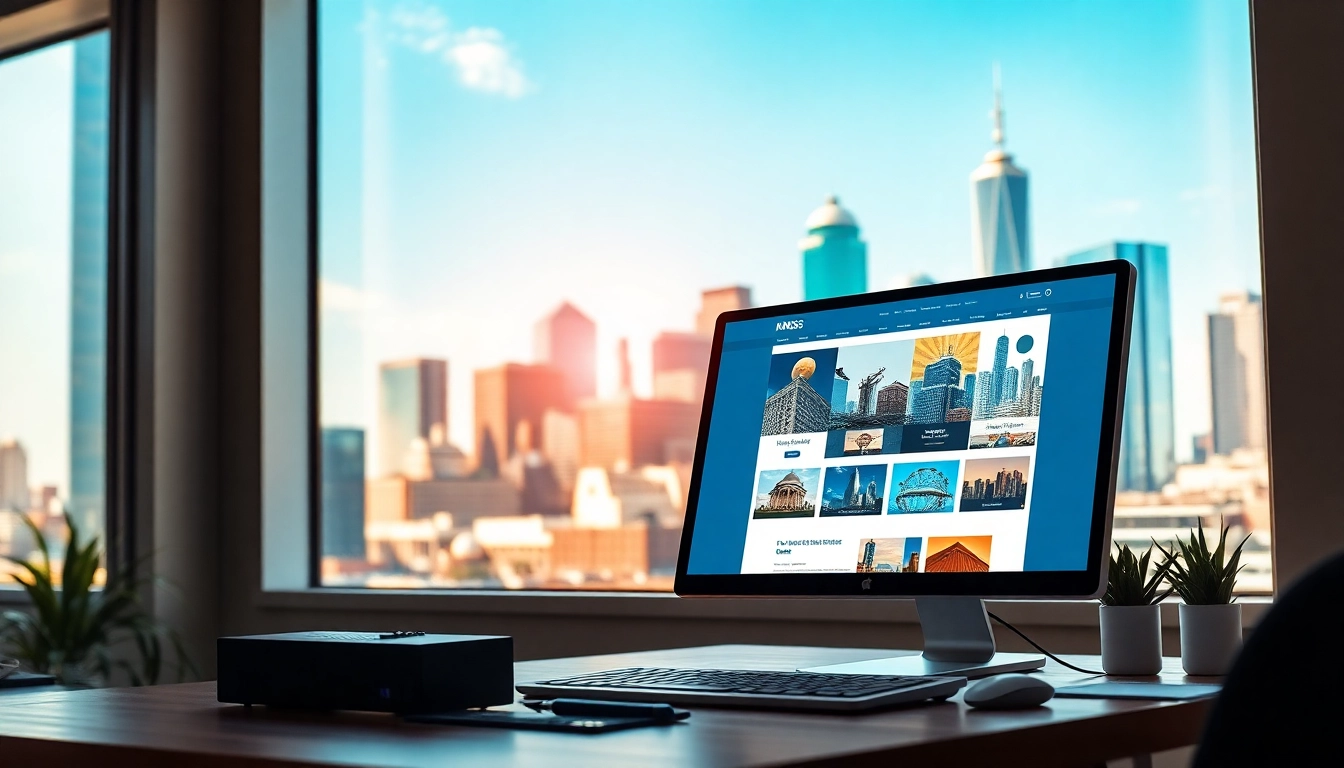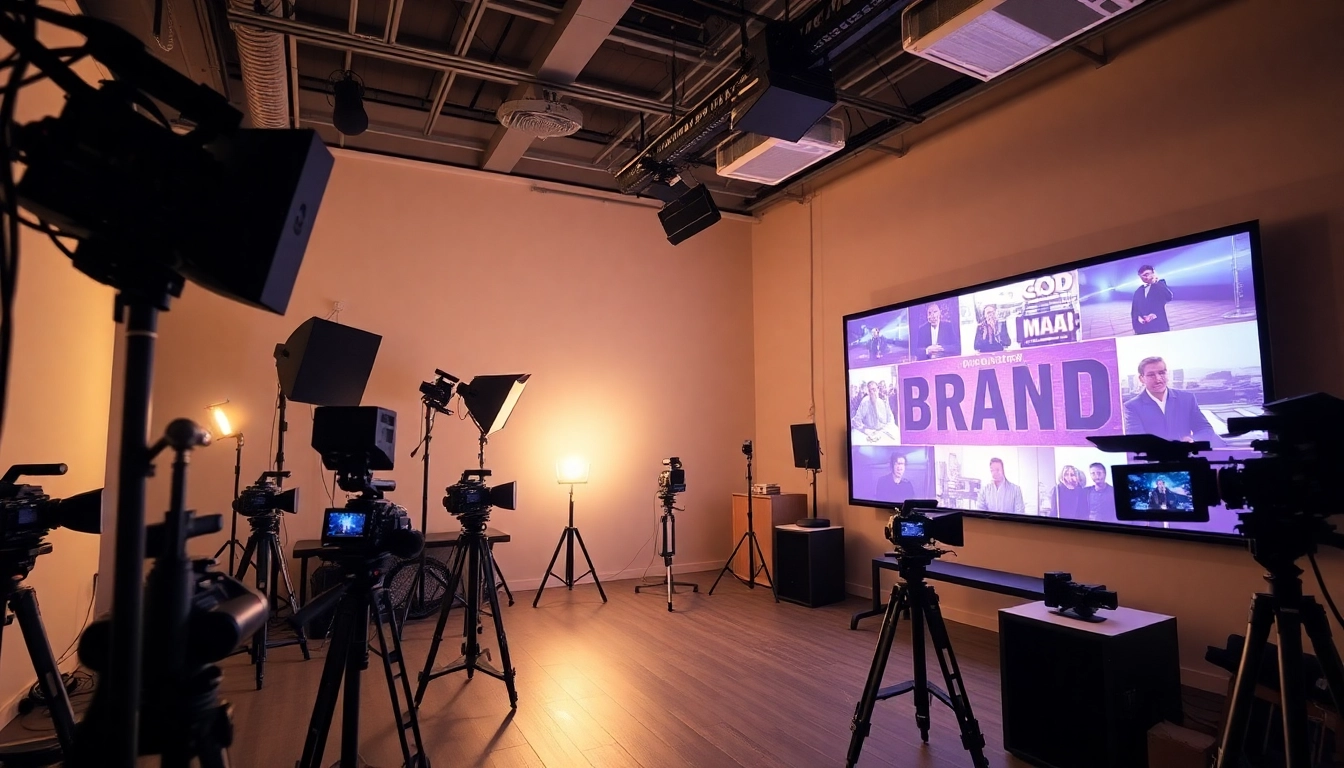Introduction to Website Design Kansas City
In an increasingly digital world, the significance of a well-designed website cannot be overstated, especially in regions bustling with innovation like Kansas City. A website serves as your online storefront, a point of interaction for potential clients and customers. As businesses in Kansas City aim to carve unique identities in competitive markets, the demand for expertly crafted website design kansas city has surged. This article delves into the essentials of web design tailored for Kansas City, offering insights into best practices that not only elevate your brand but also ensure that it meets the modern consumer’s expectations.
Understanding the Importance of Web Design
A compelling website is not just about aesthetics; it is crucial for establishing credibility and trust. In Kansas City, where numerous startups and established enterprises coexist, having an impressive online presence is vital for standing out. Users often form instant judgments based on initial website impressions, making effective design paramount. Additionally, a well-structured website can lead to better search engine rankings, increased traffic, and ultimately, higher conversion rates.
Key Elements of Successful Website Design
Successful website design encompasses various elements that work together to create a cohesive user experience. Key features include:
- Visual Appeal: This involves thoughtful use of color schemes, typography, and imagery that resonate with your target audience.
- Navigation: Clear, intuitive navigation ensures users can find what they need quickly and comfortably.
- Content: Relevant, high-quality content that engages users and encourages interaction is vital.
- Loading Speed: A fast-loading site reduces bounce rates and improves user retention.
- Mobile Optimization: With a growing number of users accessing websites via mobile devices, responsive design is essential.
Trends in Website Design Kansas City
Staying ahead in the fast-paced world of web design requires awareness of current trends. Kansas City has its unique flavor, often blending local culture with modern design practices. Noteworthy trends include:
- Minimalism: Clean lines, ample white space, and reduced distractions are key styles gaining traction.
- Dark Mode: Offering a darker background enhances readability and reduces eye strain, making it popular among users.
- Dynamic Content: Utilizing animations and interactive elements to engage users and provide compelling experiences.
- Personalization: Tailoring user experiences based on data analytics to make sites more relevant to individual users.
Choosing the Right Design Aesthetic
Identifying Your Brand’s Unique Voice
Your website is a powerful expression of your brand’s voice. To choose the right design aesthetic, begin by identifying the core values and personality of your brand. Conduct surveys and focus groups to gather insights from your target audience about what they perceive your brand to represent. Additionally, create mood boards that showcase elements like color palettes, typography, and imagery that reflect your brand’s character.
Popular Aesthetics in Website Design Kansas City
Different businesses gravitate towards specific aesthetics that resonate with their ethos and customer expectations. Some popular aesthetics in Kansas City include:
- Rustic Charm: Reflective of Kansas City’s heritage, many brands favor warm tones and earthy textures that invite users in.
- Modern Sophistication: Sleek, contemporary designs often appeal to tech-oriented and professional services, emphasizing a clean look with high-quality images.
- Edgy and Creative: Startups and creative agencies might opt for bold colors and quirky layouts that embody their innovative spirit.
Case Studies: Local Success Stories
Examining local success stories can provide valuable lessons in choosing the right design aesthetic. For example, a boutique coffee shop in Kansas City embraced a rustic aesthetic that integrated local artwork and natural materials. This approach not only enhanced their brand image but also created a welcoming environment that increased foot traffic and online engagement.
Similarly, a tech startup opted for a modern, minimalist aesthetic, prioritizing user experience and mobile responsiveness. By leveraging user testimonials and dynamic content on their site, they were able to create a compelling narrative that resonated with potential clients, resulting in significant business growth.
Implementing User-Centric Design Principles
Key Principles of User Experience Design
User experience (UX) is integral to effective website design, especially as user expectations evolve. Key principles include:
- Empathy: Understanding your users’ needs, motivations, and pain points is essential for creating a relevant website.
- Consistency: Maintaining a consistent design language throughout the site enhances usability and builds trust.
- Feedback: Providing users with immediate feedback on their actions (e.g., confirming form submissions) improves satisfaction.
Importance of Mobile Responsiveness
Given the increasing reliance on mobile devices, ensuring that your site is responsive is crucial. A mobile-optimized site adapts seamlessly to different screen sizes, offering a consistent experience across devices. A responsive design enhances user retention, as visitors are more likely to return if they can navigate your site easily on their mobile devices.
Accessibility Standards in Web Design
Accessibility in web design is not just a legal requirement but a moral obligation. Ensuring that your website is accessible to all users, including those with disabilities, can significantly expand your audience. This includes using alt text for images, ensuring sufficient color contrast, and providing keyboard navigation options. Implementing these standards reflects a commitment to inclusivity and strengthens your brand reputation.
SEO Considerations in Website Design
Integrating SEO into Your Design Process
Search Engine Optimization (SEO) should be a cornerstone of your website design process. Begin by incorporating SEO best practices from the outset, including:
- Keyword Research: Identify relevant keywords, such as website design kansas city, and integrate them naturally into your content.
- Meta Tags: Optimize meta titles and descriptions to improve click-through rates from search results.
- URL Structure: Create clean, descriptive URLs that are easy for both search engines and users to understand.
Common SEO Mistakes to Avoid
While pursuing SEO, avoid common pitfalls that can hinder your website’s performance:
- Neglecting Mobile Optimization: Failing to optimize for mobile devices can lead to reduced rankings.
- Keyword Stuffing: Overusing keywords results in poor readability and can negatively affect SEO.
- Ignoring Analytics: Not tracking performance metrics can prevent you from making necessary adjustments for improvement.
Tools for Monitoring SEO Performance
Utilizing analytics tools can provide insights into your website’s SEO performance. Essential tools include:
- Google Analytics: Offers insights into traffic patterns, user behavior, and conversion tracking.
- Google Search Console: Helps monitor how your site appears in search results, allowing for performance analysis and optimization.
- SEO Auditing Tools: Tools like SEMrush and Ahrefs can identify technical issues that might be hindering your site’s SEO efforts.
Future Trends in Website Design Kansas City
Emerging Technologies Shaping Web Design
The future of web design is rapidly evolving with technological advancements. Emerging technologies such as augmented reality (AR) and virtual reality (VR) are beginning to shape how users interact with websites. In Kansas City, businesses may embrace these technologies to create immersive experiences that engage users and enhance their understanding of products and services.
The Role of Artificial Intelligence
AI is transforming website design in several ways, from chatbots enhancing customer service to algorithms personalizing user experiences. Implementing AI-driven tools can streamline processes, analyze user behavior, and provide insights that help refine your design strategy. For instance, AI can help in creating dynamic content that adapts to user preferences, making the experience more engaging.
Preparing for Changes in User Behavior
User behavior is constantly changing as new technologies and cultural shifts emerge. Staying attuned to these changes is vital for maintaining relevance in your web design strategy. This could mean adapting to new trends in content consumption, such as video content becoming more prevalent, or shifts towards greater environmental consciousness influencing design choices. Businesses in Kansas City must prepare to pivot and innovate regularly to meet evolving user expectations.



